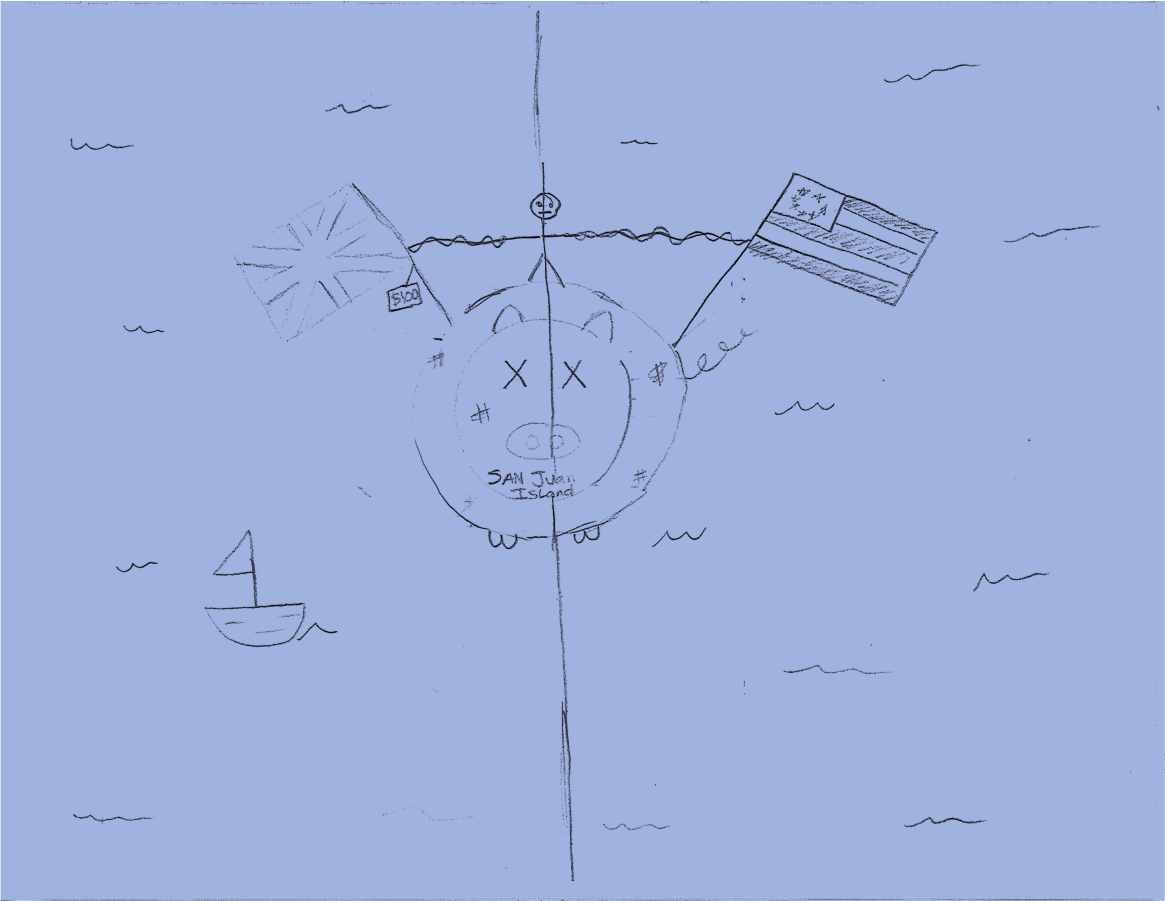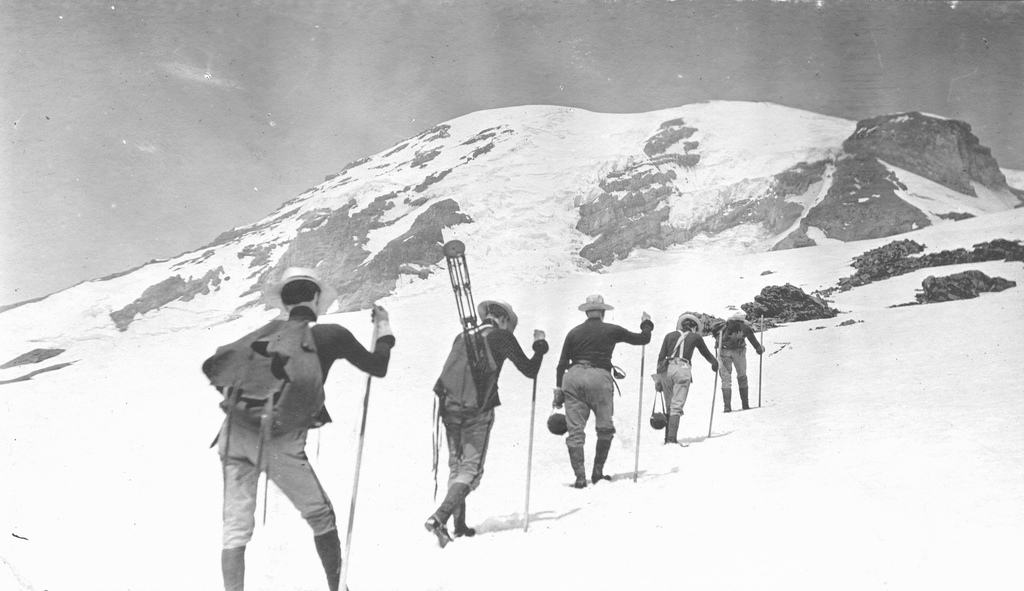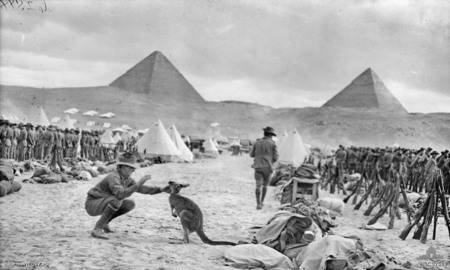
I was impressed with the products students created when I ran the Pig War DBQ with my sophomore U.S. history and government class. I incorporated it into the last lesson of my work sample as a performance assessment because it touched on three of my learning targets: increased knowledge of the U.S.’s occupation of Pacific Northwest, improved historical reading skills, and a more-developed ability to work collaboratively. In teams of five, students tackled the documents and re-created narratives of the event, all within 90 minutes. Products that they created included straight narratives, a poem told from the pig’s perspective, and the political cartoon pictured in this post.
Some narratives were more complete than others, but for the most part, each team was able to extract the important historical markers of the Pig War. The teams that were most successful were those in which one or two of the students took up an executive or administrative function. My goal was to have the students work as a group; 22 documents would be difficult for a single person to analyze in 90 minutes. Instead, the executor would outsource the documents to the rest of the team and have individual team members summarize those documents. Those summaries were eventually incorporated into a common template, which was fleshed-out into a unified narrative.
As an experiment, I tried to create an atmosphere in which the success or failure of a team to create a product would not affect their grades. Rather, the goal was to create the possible narrative purely for the sake of creating it, for the glory of being the best. This saw mixed success on a student-per-student basis, but overall the teams were able to work effectively to create quality products.
As it was, students assessed as team “most knowledgeable others” (MKOs) were the most contributive to the assignment. Students with lower skill abilities were at first disruptive to team progress. As the exercise progressed, competitive pressure required each team to “step up their game,” and non-contributive members were essentially ostracized or forced to actually contribute to their teams. I observed less-proficient students alternatively find a role in their groups, or simply tune out of the exercise. In the future, I think I would be more explicit in my expectations for team members to actively contribute to the process of creating a product, in terms of quantifying individual contribution for the use of grading.
I was not sure how adept my students would be at accomplishing my goal, of their creating discrete narratives of the historical event that created the documents. Frankly, I was dubious of the lesson’s success. On the first day of class, I administered a team-building exercise, a tower-building activity, and not every group was able to create a free-standing tower. I was worried that this assignment would show a similar success rate, and that not every team would be able to create a product.
To my surprise and delight, however, every team was able to create a narrative that included that major markers of the historical event in question. This shows that every team was able to utilize their historical reading skills to pull relevant information from the documents, and synthesize an historically accurate interpretation of the event in question.
My approach to presenting the lesson, emphasizing that it was supposed to be fun and “for the glory” of creating the most quality norm-referenced product, met with mixed success on a per-student basis. I would be curious to see if with a consistently implemented “for fun” approach, coupled with the peer-pressure effect, would create a classroom climate in which every team member would give his or her best effort.



